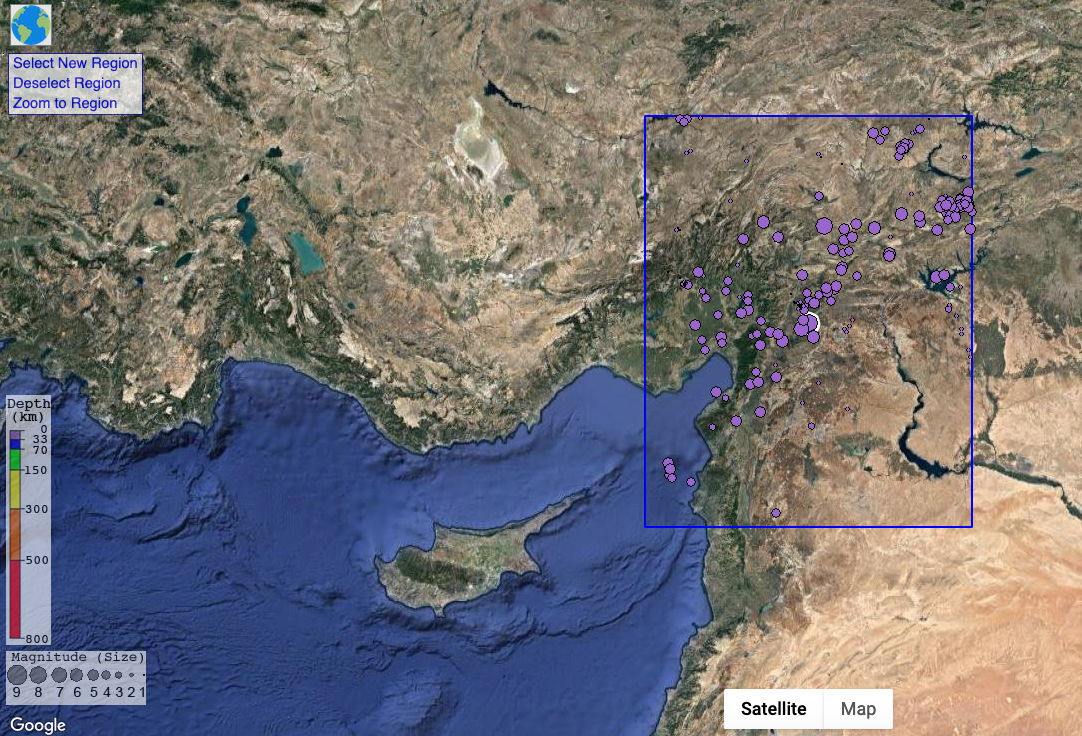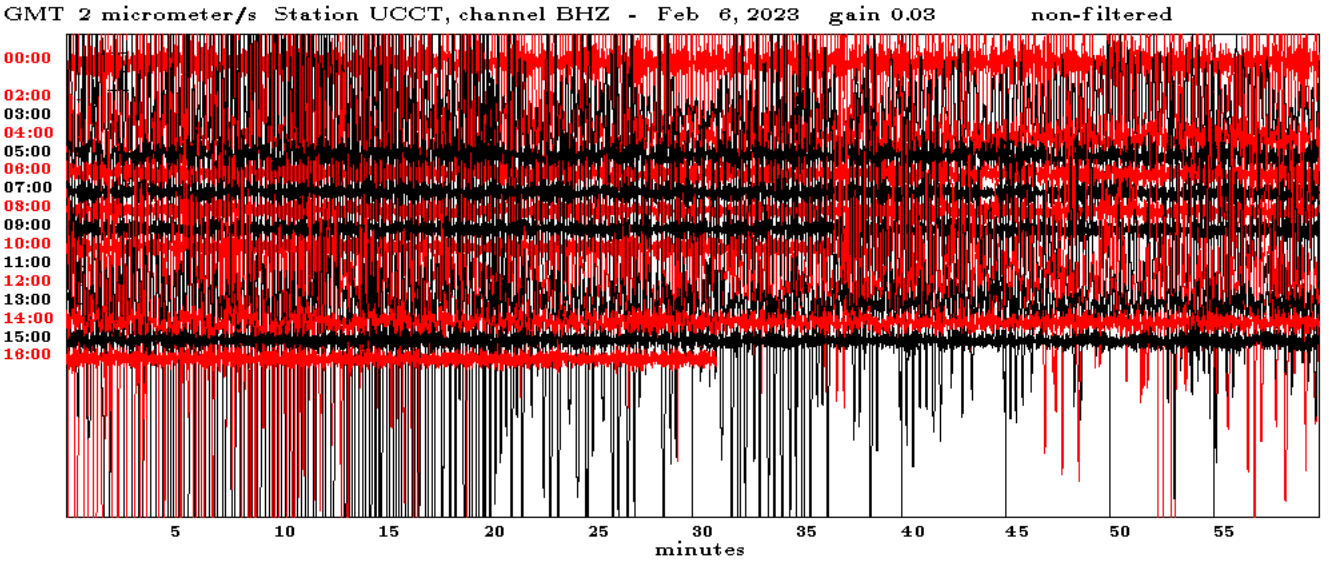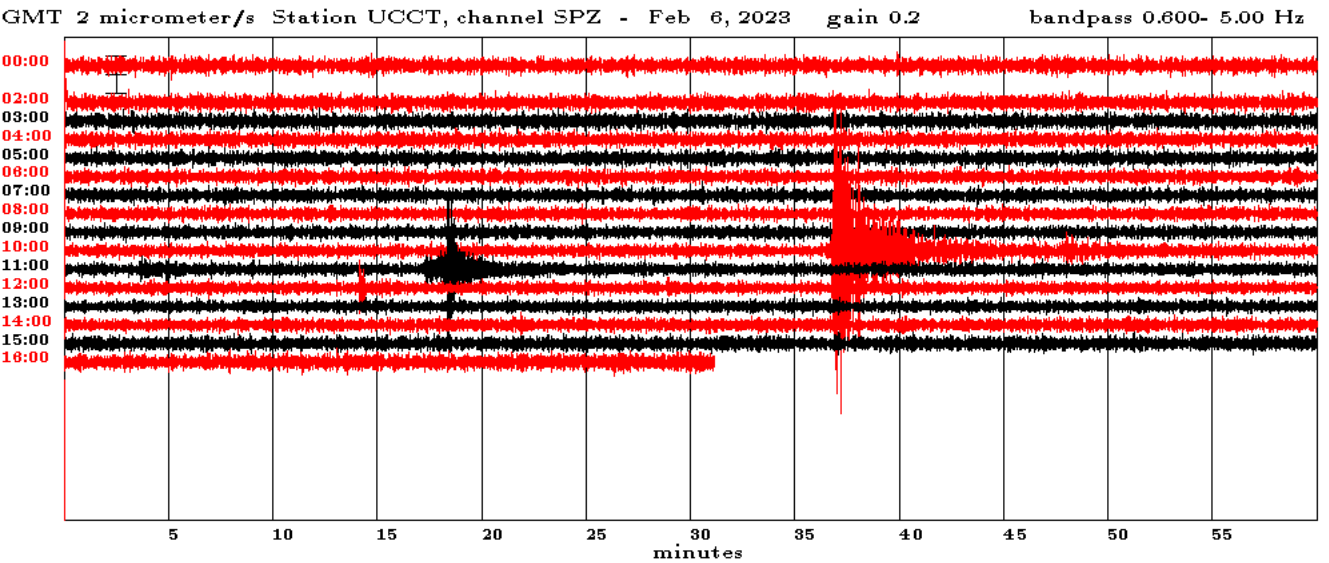Professor Vernon Cormier discusses the recording of the Turkey earthquake on the UConn seismometer. Shown below are UConn seismograms of Turkey's earthquake and aftershocks the past 24 hours. Also below is a map of the mainshock and aftershock, illustrating the length of fault slip. In the mainshock, the slip will distributed across a broad area of the fault plane but in irregular patches of differing amounts of slip. Aftershocks then fill in areas that have not slipped or have less amounts of slip during the mainshock. Think of the fault plane as an irregular 3-D surface with bumps (asperities) with laterally varying coefficients of static friction.
The complexity of fault planes is such that initial conditions are reset after each earthquake, such that earthquake "prediction" remains a practically unachievable goal. Even probabilistic forecasting (time, place, and size) is very difficult, requiring an unachievably accurate and long description of the history of prior motion extending back 1000's of years. A recent, more achievable advance, has been early warning systems (e.g., Mexico), where an event location and size is estimated from first arriving elastic waves, and then a warning is issued for the later arrival of slower wavetypes (elastic surface waves), which are most damaging to structures because of their stronger horizontal motions (structures weakest in shear).
In the seismograms, the visual display of the broadband component is clipped with motion extending across the figure. The actual recording, however, is digital and can be displayed so that it is unclipped. The instrument has sufficient dynamic range so that it can accurately record the motion at long (teleseismic) range for even this large event. The short-period display (filtered to highlight just motion around 1 Hz) is unclipped and illustrates a large aftershock around 10:00 hrs GMT. The short-period filtered display somehow did not properly process the mainshock around 1:00 hrs GMT.



Professor Vernon Cormier was also recently quoted in the NYTimes about new evidence for an innermost inner core of Earth, which agrees well with the conclusions and review of this topic he has in a chapter of his Earth's Core book (Cormier, Bergman, and Olson).